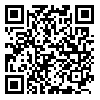BibTeX | RIS | EndNote | Medlars | ProCite | Reference Manager | RefWorks
Send citation to:
URL: http://ijme.tums.ac.ir/article-1-139-en.html
2- Medical Ethics and History of Medicine Research Center, Tehran University of Medical Sciences, Tehran, Iran.
Animal cloning is one of the animal biotechnology branches. Although this method has been used since 1950, but many have paid attention to cloning by birth of Dally. Because the way of Dolly production was completely different from other existed methods in cloning.
This new-found and unprecedented method has been called "Somatic Cell Nuclear Transfer" (SCNT), so scientists have eagerly paid attention to many profitable abilities such as, duplicating valued animals traits, preventing endangered animal species from extinction or even restoration of extinct animals, producing high quality food and drug by using cloning as a way for propagating transgenic animals.
Even though all these instances sound good and encourage use of SCNT, in fact, none of them has practically become feasible so far. The main reason for this claim is that in spite of whole attempts taken for producing cloned animals, the method still is under debate and the hit-rates of this method has been kept considerably low and disappointing.
Because of several reasons, we cannot ignore this recognized obstacle as low efficiency. Along with this issue, there are various sub-effects, which put human and animals life at risk. Not only the High rates of miscarriages or birth of genetically abnormal animals, causes many different health-oriented problems for human and animals, but also it can directly and indirectly endanger human and animals welfare. Nowadays hordes of legal and ethical criticism around SCNT in reaction to these portentous signs, invite scientists to be more scrupulous and patient in its broad enforcement.
Taken together, although at first glance SCNT seems to be promising, it's usefulness has been diminished because of difficulties in its application in broad spectrum. Therefore SCNT should be kept under surveillance and use of it must be just limited to very important and critical cases such as medical purposes, as long as all due observations and cautions take into account before implementing.
Accepted: 2013/10/8 | Published: 2017/09/27
| Rights and permissions | |
 |
This work is licensed under a Creative Commons Attribution-NonCommercial 4.0 International License. |





